Audiovisual technology has become an integral part of our lives. It is present in nearly every building, business, and event. The layperson might give little thought to the presence of AV technology, but behind its successful implementation and use is a dedicated team that has carefully planned, managed, and evaluated every stage of that technology’s installation.
AV project management is no small task, and it’s full of challenges. Whether you’re planning a large installation for a new business or updating a small system in a conference room, understanding how to effectively manage your AV project can contribute to your overall success.
What Is AV Project Management?
AV project management is often a key subset of another project, like launching a sporting venue, hosting a major event in your entertainment space, or even the grand opening of a new office building or educational facility.
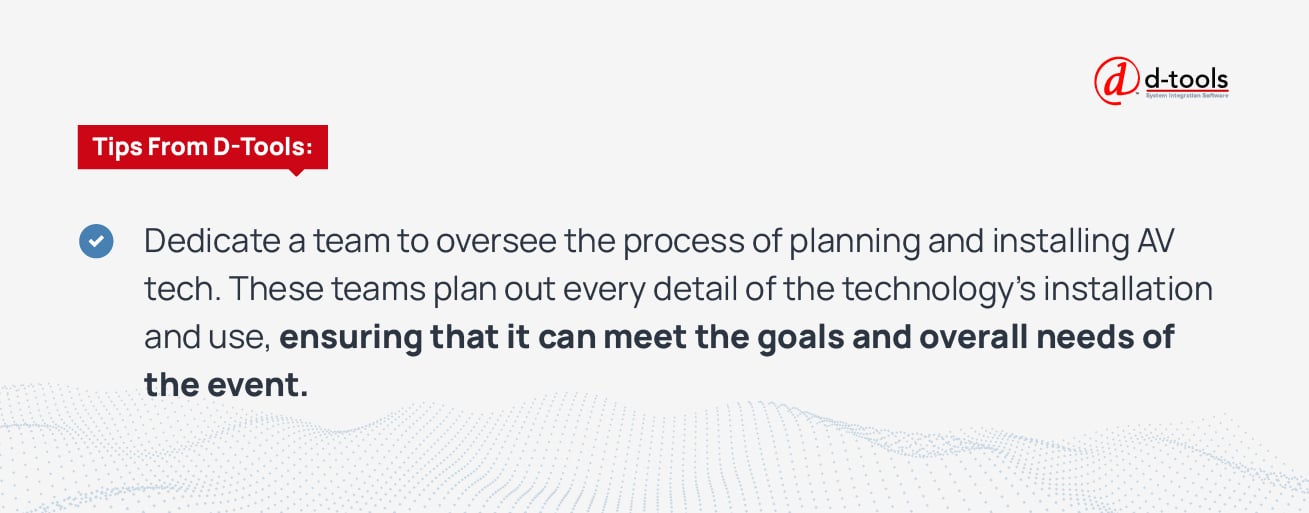
Planning an AV tech installation is a significant challenge, and the job often becomes so large that businesses dedicate entire teams to overseeing the process. These teams map out every detail of the technology’s installation and use, ensuring that it can meet the goals and overall needs of the event.
An AV project management team might consist of several individuals, including a project manager and team members, including clients and contractors. Those members all work together during all of the project’s stages.
A typical project consists of three phases:
- Planning: Set goals, outline the work to be accomplished, develop team processes, and assign tasks to team members
- Execution: Perform project-related work, troubleshoot issues that occur, and meet goals
- Review: Assess the project’s success and the team’s performance, and discuss lessons learned
Those phases and the work required for each will differ depending on your project scope and goals. While every project is unique, you can follow some essential steps that can contribute to its success.
8 Steps of Successful AV Project Management
As you start to plan your AV project, you’ll quickly find that you’re working with multiple to-do lists. The following steps can help to guide your process and ensure that you’re well-organized and ready for the challenges that might arise.
1. Determine Your Project Team
One of the first steps toward managing an AV project is to determine and create a project team. Your team will need a project manager, but it will also need technical specialists. Depending on your project, stakeholders, clients, and possibly additional supervisors may also be integral team members.
At this stage, it’s also essential to determine the scope of work that the project will involve. The more details you have about the specific workload involved, the better you’ll be able to determine how many team members you’ll need to be able to carry that workload. It’s also helpful to identify any specific or unique skills that the project will require, and make sure that your team consists of members who have those skills.
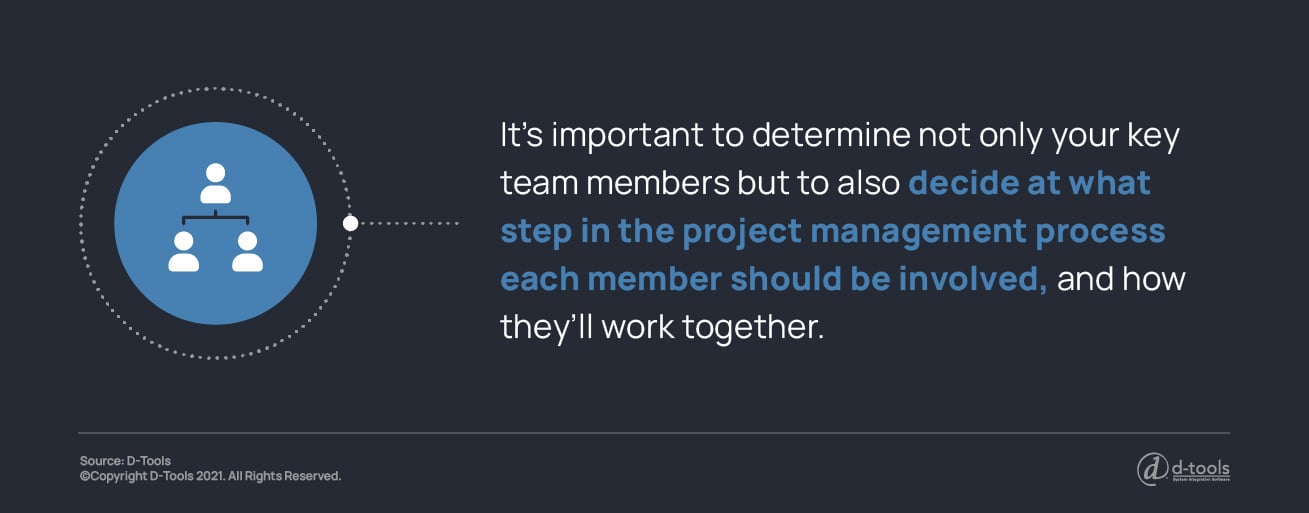
It’s important to determine not only your key team members, but to also decide at what step in the project management process each member should be involved. Consider the roles that each person will hold and how they’ll work together. You may also want to start detailing the responsibilities of each team member.
2. Establish Clear Communication Strategies
Team communication can be a major barrier to effective AV project management. Many AV projects involve team members who are located in different departments, buildings, or even different states or time zones. When you’re working under tight deadlines, accurate and prompt communication becomes even more important in keeping your project moving forward.
Outlining communication strategies at the beginning of the project can help avoid some communication delays and errors that are common project management issues. Consider getting your team involved and discussing communication tools that they’re already comfortable with. This is particularly valuable when you’re working with a client and you need to establish an open line of communication. Clarifying working hours, availability, and response time expectations can help your whole team to approach the project with a mutual understanding and unified approach.
This may also be the time to consider using AV project management software. A quality software platform can help to facilitate internal team communication and even capture and record that communication for easy future reference.
3. Determine Project Goals
As you start to evaluate the work to be done, it’s also time to determine the goals for your project. You can break these goals down into what you want to accomplish during each stage of the project.
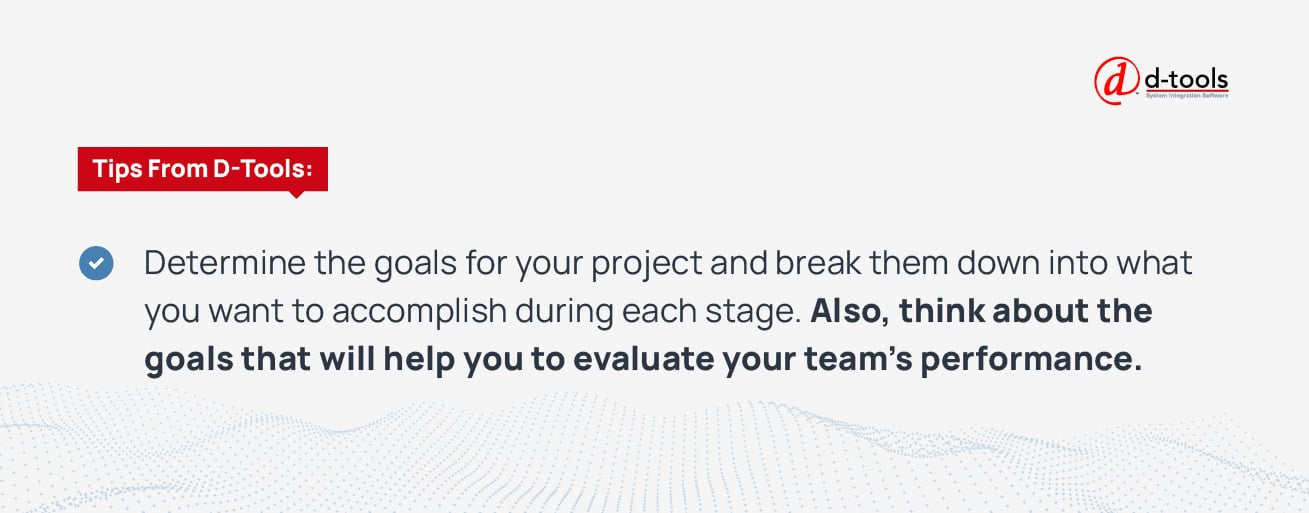
Don’t forget that your goals can also involve important elements like quality of work, timely communication, and other elements that will contribute to your project’s success. While it’s easy to focus on meeting specific milestones and viewing those as goals, also think about the goals that will help you to evaluate your team’s performance, too.
4. Create a Project Timeline
Your project timeline will guide your work through the implementation phase, and it really serves as the overall roadmap for your team. Start with a general list of everything you need to accomplish, and determine the deadline for the entire project’s completion.
Next, work backward. Break down those larger tasks into smaller, more manageable tasks. Once you’ve created individual tasks, you can assign tasks to certain team members and add deadlines for their completion.
When you’re determining deadlines, always leave yourself extra time. Back your deadlines up so that, when something inevitably goes wrong, you won’t immediately delay the result of your project. Be sure to consider which tasks are dependent on the completion of previous tasks, too. A delay in a previous task can trigger a chain reaction, delaying subsequent tasks and putting you past your deadline. Building in extra time and anticipating potential problems can help you to avoid this scenario.

As you build your project timeline, you create a workflow that can guide the overall project’s progress. Plan on referring to this timeline frequently, but realize that you may also need to make adjustments as you progress through the project.
5. Develop a Detailed Budget - and Refer to It Often
Good, detailed budgeting is essential to a project’s success, and it can help you avoid getting into tight spots and facing difficult decisions later in the project’s stages. Careful research, accurate quoting, and rigorous attention to detail can help to ensure that your budget is appropriate.
While establishing a detailed budget can help you plan an AV project, it’s equally important to frequently refer to that budget as the project evolves. There will almost inevitably be unexpected expenses, and it’s essential to balance your actual costs against your predictions. This is also a stage where client communication becomes even more important, especially if you discover that the project’s costs will exceed your initial predictions.
6. Create an Audio Visual Installation Checklist
The AV installation process is particularly prone to errors, so developing an installation checklist can contribute to your project’s success.
Your installation checklist will need to detail the equipment and supplies needed, as well as policies and procedures that installation technicians should be trained in. This is the time to develop an installation plan that outlines the order of installation, as well as the locations.
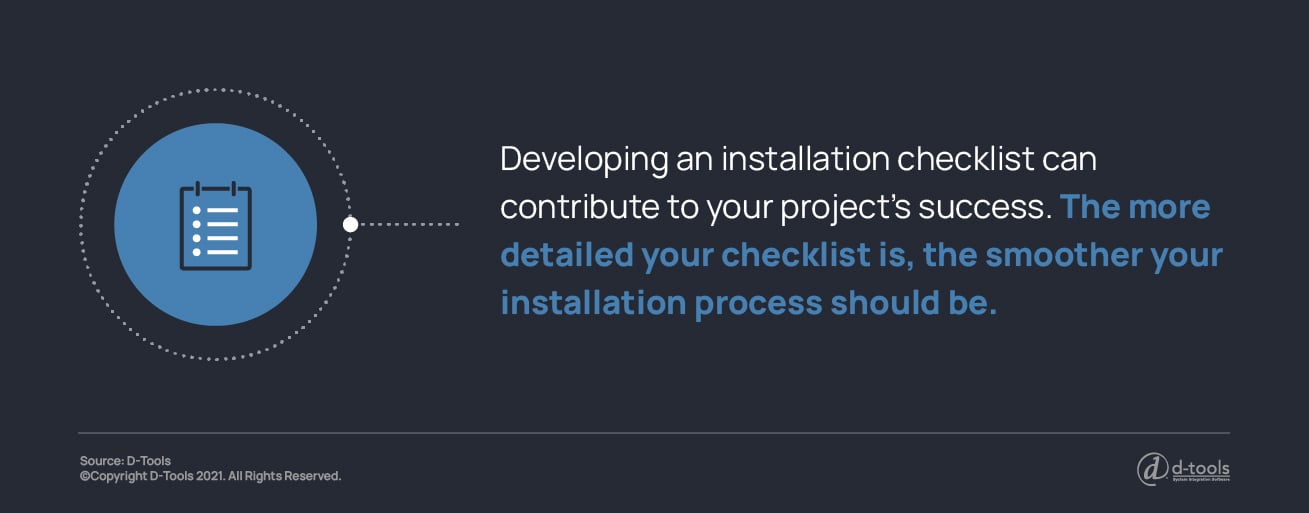
The more detailed this checklist is, the smoother your installation process should be. This checklist can help to ensure that you don’t miss important steps, and it may help limit the troubleshooting you have to do after an installation.
7. Determine Appropriate Tests and Fixes
Rigorous testing is one of the most important elements of AV project management. Investing plenty of time in thorough testing can help to identify issues that can be addressed before they affect the technology’s performance.
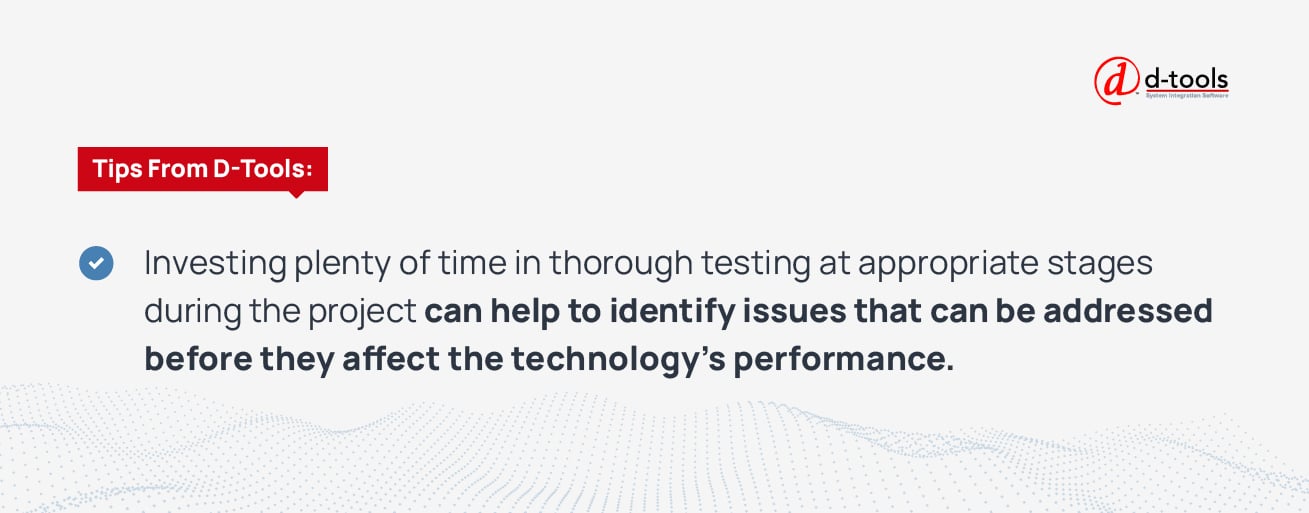
It’s essential to perform plenty of testing at appropriate stages during the project. You’ll need to identify those stages, as well as the types of testing that you can use to validate the technology’s performance.
You may also want to develop a troubleshooting procedure or list of fixes to help the process go smoothly and quickly.
8. Use the Right AV Project Management Software
Managing any AV project, whether it is a small residential retrofit or large-scale commercial new build, is a large task, and it requires rigorous attention to detail. It’s essential to track everything from task deadlines to budgets, and you also need to be able to easily review project progress and identify potential issues before they become larger problems.
Having the right project management software can make that easier. The right AV project management software can help you with everything from proposals to system design and development to enhancing team effectiveness. A quality software platform takes some of the work out of tracking essential details and manually checking in with your team members. It leaves you to focus on the tasks at hand and to address issues that truly require your attention and energy.
>> Related Read: The Ultimate Guide to Project Management


